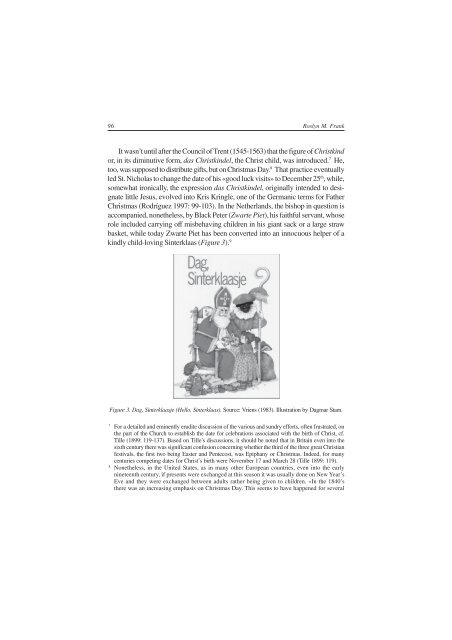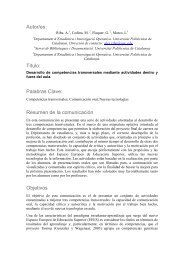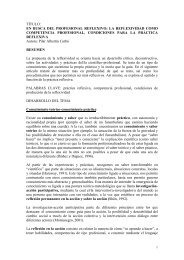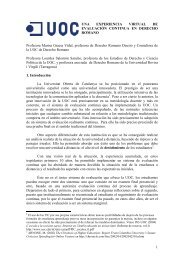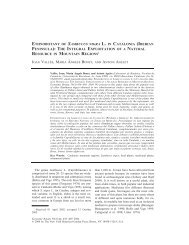Impaginato 5.p65 - Universitat Rovira i Virgili
Impaginato 5.p65 - Universitat Rovira i Virgili
Impaginato 5.p65 - Universitat Rovira i Virgili
You also want an ePaper? Increase the reach of your titles
YUMPU automatically turns print PDFs into web optimized ePapers that Google loves.
96<br />
Roslyn M. Frank<br />
It wasn’t until after the Council of Trent (1545-1563) that the figure of Christkind<br />
or, in its diminutive form, das Christkindel, the Christ child, was introduced. 7 He,<br />
too, was supposed to distribute gifts, but on Christmas Day. 8 That practice eventually<br />
led St. Nicholas to change the date of his «good luck visits» to December 25 th , while,<br />
somewhat ironically, the expression das Christkindel, originally intended to designate<br />
little Jesus, evolved into Kris Kringle, one of the Germanic terms for Father<br />
Christmas (Rodríguez 1997: 99-103). In the Netherlands, the bishop in question is<br />
accompanied, nonetheless, by Black Peter (Zwarte Piet), his faithful servant, whose<br />
role included carrying off misbehaving children in his giant sack or a large straw<br />
basket, while today Zwarte Piet has been converted into an innocuous helper of a<br />
kindly child-loving Sinterklaas (Figure 3). 9<br />
Figure 3. Dag, Sinterklaasje (Hello, Sinterklaas). Source: Vriens (1983). Illustration by Dagmar Stam.<br />
7 For a detailed and eminently erudite discussion of the various and sundry efforts, often frustrated, on<br />
the part of the Church to establish the date for celebrations associated with the birth of Christ, cf.<br />
Tille (1899: 119-137). Based on Tille’s discussions, it should be noted that in Britain even into the<br />
sixth century there was significant confusion concerning whether the third of the three great Christian<br />
festivals, the first two being Easter and Pentecost, was Epiphany or Christmas. Indeed, for many<br />
centuries competing dates for Christ’s birth were November 17 and March 28 (Tille 1899: 119).<br />
8 Nonetheless, in the United States, as in many other European countries, even into the early<br />
nineteenth century, if presents were exchanged at this season it was usually done on New Year’s<br />
Eve and they were exchanged between adults rather being given to children. «In the 1840’s<br />
there was an increasing emphasis on Christmas Day. This seems to have happened for several


